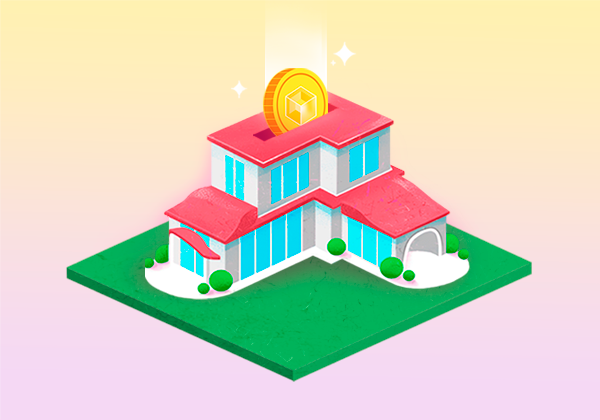
What Factors Can Reduce the Expected Return on Real Estate Investment?
Investing in real estate is a straightforward path to profitable returns. However, many investors overlook crucial elements that can significantly impact the expected return. Let's explore these often-neglected factors, from recurring costs and unexpected expenditures, through periods of vacancy, to the influence of long-term market changes.
Table of contents
Recurring Expenses
Understanding the full scope of recurring expenses is critical to accurately forecasting the profitability of a real estate investment.
Property taxes are a prime example of such costs. They can vary widely depending on location and property value.
Similarly, insurance is a recurring cost that investors need to consider. Property insurance is a crucial safeguard against potential losses, particularly in areas susceptible to natural disasters such as floods or earthquakes.
The need for routine maintenance and repairs is another cost area that requires consideration. Regular upkeep helps maintain the property's appeal to tenants or prospective buyers and preserve its market value. This maintenance might include periodic painting, plumbing and electrical repairs, or landscaping services for properties with outdoor areas.
Utilities are another expense item, especially if the landlord pays his own bills according to the lease agreement. This could involve costs for water, electricity, waste management, and in certain scenarios, internet services.
Lastly, for properties in a condominium or homeowners association, there may be monthly or annual dues. These fees cover communal services such as security, amenities, and maintenance of common areas.
Non-recurring Costs
While recurring expenses are a constant part of owning real estate factors, non-recurring costs, though less frequent, can be just as significant.
Major appliance replacement is a typical example of a non-recurring cost. The breakdown of an expensive piece of equipment, such as a heating system or a refrigerator, can mean a substantial outlay.
Tenant-related issues can also lead to non-recurring costs. For instance, a tenant may default on their rent or cause damage beyond what the security deposit covers. In these scenarios, not only might the landlord have to cover the costs, but there might also be legal fees if the situation escalates to eviction or court proceedings.
Furthermore, there are costs associated with buying and selling a property that should be considered. These may include inspection fees, agent commissions, legal fees, and closing costs when buying, or capital gains tax. While these are not costs that an investor would incur regularly, they can significantly impact the total cost of an investment and hence its final profitability.
Downtime
In the lifecycle of property ownership, periods of vacancy or 'downtime' are a common occurrence. These are intervals when your investment property is unoccupied, not earning any income, and yet still incurring costs.
Transitions between tenants, often used for maintenance, marketing, and tenant new vetting, can result in a loss of potential revenue. If it takes a month to ready the property for the next occupant and secure a new lease agreement, you're looking at a month without rental income.
Moreover, macroeconomic factors can influence the duration of these vacancies. During periods of economic decline, it could be more challenging to find dependable tenants, resulting in extended downtime. Also, regional market factors such as seasonality can affect rental demand – a property in a holiday destination, for instance, could experience extended vacancies during the off-season.
Unexpected events, like major repairs following an incident, can also lead to downtime, as the property might be unfit for occupancy until the issue is resolved.
To account for this inevitable downtime, many investors include a vacancy rate in their financial models. By factoring in a vacancy rate of around 8-10% (approximately one month's rent per year), investors can build a more realistic income model and make more accurate return on investment projections.
Long-term Market Changes
Real estate investment is typically a marathon, not a sprint, often spanning across many years. As such, understanding the potential for long-term market changes is crucial as they can substantially influence a property's profitability.
The dynamics of the property market are dictated by a myriad of factors, including economic cycles, population changes, governmental policies, and industry-wide shifts in the real estate sector. For example, a neighborhood that's currently in its infancy could undergo significant growth due to planned infrastructure developments or emerging commercial hubs. Conversely, the emergence of industrial facilities and the subsequent environmental degradation in the area can have a detrimental effect on property values in the long run.
Furthermore, declining budgets at the local or city level may lead to a deterioration in infrastructure and the overall condition of the surroundings, ultimately diminishing the attractiveness of the area and negatively impacting property prices.
Population dynamics also play a significant role in shaping property demand and value. As the demographic profile of a region evolves, experiences growth, or changes preferences — like a shift towards remote work prompting a higher demand for properties with home offices — the demand for certain property types can fluctuate.
Moreover, the repercussions of climate change could prompt long-term shifts in the appeal and worth of properties in certain locations. Coastal properties might lose their allure with the threat of rising sea levels, while regions with moderate climates may witness an uptick in demand.
Therefore, it's essential for investors to look beyond the present market conditions and factors affecting real estate market when assessing a potential real estate investment.
Conclusion
Real estate investment profitability is impacted by multiple factors. Regular and irregular costs, periods of vacancy or 'downtime', and market shifts over time can all affect the expected return. By accounting for these elements in financial planning, investors can better anticipate potential hurdles and yield more accurate return projections.
► Sabai Academy — a place where studying blockchain, crypto, fractional ownership, and real estate investments becomes a catalyst for capital growth!
Sabai Academy
Join our FREE courses and get REWARDS IN CRYPTO!
Related Articles

What is Proof-of-Stake, and How Does It Work?

FULL GUIDE: Property Pools

